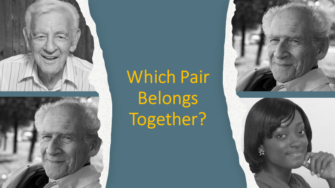Donors and Non-Donors, Is That the Best We Can Do?
Why do people give? I’ve seen academic research showing a big driver of giving is asking.
That’s like saying you can’t win the lottery if you don’t play. True enough but it doesn’t make the opposite true; you will also lose if you play. The expected return is always negative.
People don’t give because we ask even if it’s a necessary precondition. But so is being alive and that’s about as insightful but less damaging.
The ask = give viewpoint fosters the ask more to get more, volume mindset. This perpetuates the downward spiral of sending more asks that quickly runs out of steam but not before turning a bunch of donors into non-donors.
Donors and non-donors, is that the best we can do?
I read this from a fundraising agency,
“It’s clear that growth comes from an expanded view of who our supporters might be. This often means identifying and acquiring younger donors or a more ethnically diverse audience or acquiring in new channels where potential has yet to be tapped.”
F2F acquired donors are almost entirely “new” to the organization, they don’t live inside data- coops or on mailing lists. In this agency’s worldview we’ve got a whole new breed of donor from a new channel and hey, they tend to be younger too.
Younger, new channel of acquisition. I’ve just taken from the non-donor pile and pulled into the donor pile, this exotic breed of younger donors who say yes when asked but maybe only on street corners or at their door.
There are no unicorn herds of untapped non-donors just waiting to be asked to join the relatively tiny legion of donors. There is no metaverse.
All those newly acquired, younger donors signed up via F2F are exactly like your existing supporters if only we move away from who our supporters might be to who they are.
To do this we must get well beyond the superficial notion that they are older, white and give by mail, even if that is superficially accurate.

Thought experiment. Which pair belongs together? Our bias to use what’s available means we naturally sort the old, white guys together. What if I further bias things and say the old white guys were both acquired years ago via direct mail and the black woman is a new donor acquired F2F?
Now imagine I tell you one old white guy is conservative and gives to right wing causes and the other is liberal, giving to left wing causes.
Surely they can’t both be giving to a conservation cause to honor their deceased spouse and their weekend nature walks in the nearby state park?
And this black woman uses the same state park on the same weekends because she is an avid mountain biker.
The old white guys are Conservationists. The young, black woman is a mountain biker. These are the Identities behind the demographics. There are legions of other people just like them, who look nothing like them on the outside, who may give to this Friends of Park X for the exact same reason.
If I want more mountain bikers to support the Park, I may make all sorts of tactical decisions (e.g. channel, list source) to find these people and those may differ from the “find them” tactical decisions for conservationists.
But, demographics and channel are almost completely useless to understand the why of human behavior. What’s easy to accumulate or observe is what we tend to rely on and it fosters superficial ideas and artificial categories, donor and non-donor or channel of transaction.
Every non-donor you want to acquire is likely already represented in your pool of donors.
Kevin


